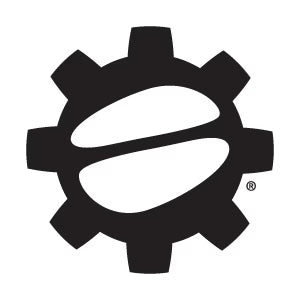Time, counter space and budget may all be concerns, but that shouldn't stop you from enjoying a delicious cup of coffee. Fresh, locally roasted whole bean coffee is a step up from capsule coffee and miles above instant. If you take the time to find a specialty coffee blend that you like, then by all means take the time to properly store and brew it! You will notice your coffee tastes better, without spending extra money. Here are some tips.
Storage
Coffee is best stored in a cool, dry, dark place. Any freezer bag or airtight canister you already have in the pantry will do. After the bag of coffee is opened, use it within 30 days. Try not to buy more than a 30-day supply, even if it is on sale. ‘Waste not, want not.’ The beans harden and eventually become bitter as they go stale. Darker roasts don’t keep as well as lighter roasts because the oilier beans are quicker to oxidize.Coffee Grinder
If you do not already have a coffee grinder in your arsenal, it is okay to ask the roaster to open the bag and grind it for you. This saves a large investment. Blade grinders are inexpensive but they are not able to make consistent size coffee grounds. An uneven extraction of the coffee can give it a strange taste. Burr grinders are more expensive, but you can always use someone else's -- the grocery store's, a friend's or your roaster's -- until your coffee budget increases. Just make sure to mention how you are brewing the coffee because the size of the grind varies for the following preparations.Cone Shaped Dripper
This style is also called 'pour over style' coffee and brand names such as Melitta, Hario and Kelita have become synonymous. The cone can be made of plastic, ceramic, glass or metal. Hot water is poured gently and evenly over the ground coffee in the cone repeatedly until your preferred coffee to water ratio is attained. This method requires hot water, the dripper, a filter, ground coffee (fine drip) and a cup or carafe. Prices start at $3 plus the other necessary items.- Pros: Cheap! Delicious. Portable. Fun to make. Easy clean up. Most models make 1-2 cups.
- Cons: Some models require a very careful directional method of pouring the hot water over the ground coffee to make sure the extraction is even. It will taste watery if this is not done with care. And it only makes a little bit of coffee at a time.
Immersion Dripper
This style is also called the Clever Dripper although there are other brands of immersion style brewing devices available. Instead of pouring the water over the bed of ground coffee and letting it drip through, this cone shaped dripper is filled, stirred and steeps like a French press. Then a lever is released and gravity flows brewed coffee into a cup or carafe. This method requires hot water, the dripper, a filter, ground coffee (fine drip) and a cup or carafe. Prices start at $18 plus the other necessary items.- Pros: Cheap! Delicious. Portable. Fun to make. Easy clean up. Most models make 1-2 cups.
- Cons: Some, but not all, coffees taste better with this method as the coffee grounds are allowed to stay in contact with the water longer as they brew.
French Press
This is also called a press pot, cafetiere, coffee press or coffee plunger. It has a long and interesting history if coffee history is your jam! Of these budget brew preps, the French press tends to be the most forgiving and easiest to learn. Prices start around $7 and it only requires the addition of ground coffee (coarser than drip) and hot water.- Pros: Cheap! Delicious. Portable. Fun to make. Available in larger sizes.
- Cons: Kind of a pain to clean up afterwards. Some people do not like that the filter allows coffee sediment through.
Cold Brew
This method is gaining popularity in the US and is already big in Japan. The benefit to this method is that it produces a cup of coffee with little to no acidity. As the name implies, it is cold brewed and served cold. This is a great budget option for warm weather climates. All you need is a cold brew filter pitcher, ground coffee (medium drip) and cold water. Pitcher prices vary, from about $18.- Pros: Cheap! Delicious. Easy to make. Available in larger sizes.
- Cons: Requires 12-24 hours so you have to plan ahead! Some people do not like that the filter allows fine coffee sediment through. This method requires you to use a larger proportion of ground coffee than hot brews, but the result is concentrated and can be diluted with additional water.
Stove Top Espresso
Say you are in the mood for something stronger, darker and bolder...You can afford an espresso maker! A stove top espresso maker is where most people start their love affair with homemade espresso coffee. These affordable devices are intimidating at first, but once you get the hang of it, it is a very consistent and easily repeatable process. Prices start around $8 and all you need is ground coffee (espresso fine), water and a stove.- Pros: Cheap! Delicious. Homemade espresso!!
- Cons: Tricky to learn at first. Also the espresso coffee grind size has to be very fine and consistent, not a job for a blade grinder.


